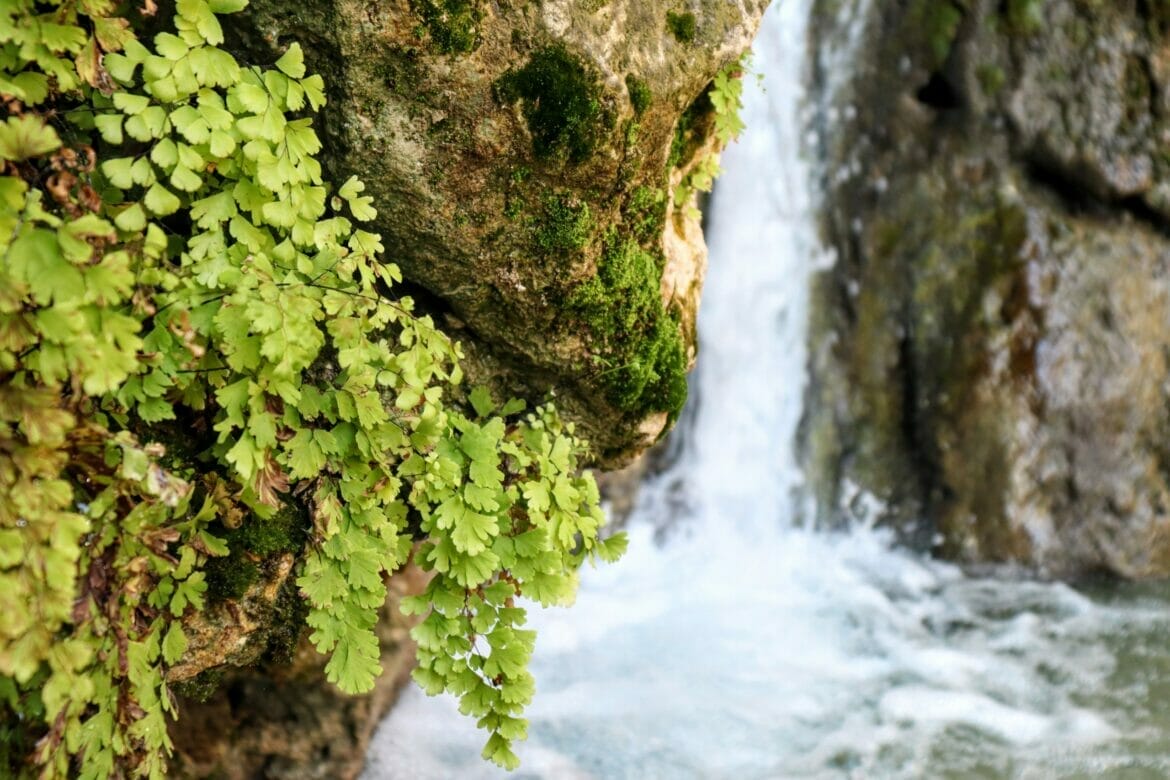
Ein Gedi – it’s one of the most popular National Parks in the country. Visit En Gedi Nature Reserve on an average day in the summertime, and you’ll find the entrance teeming with tourists and locals, sitting around picnic tables, enjoying post hike ice cream or coffee.
It’s no surprise that this Nature Reserve is a tourist favorite. In the middle of the barren desert, rivers and springs form an oasis of rich beauty. It has been inhabited throughout the last several thousand years and used as a place of ritual worship. Even the Bible mentions Ein Gedi. It’s where David hid and where Saul sought him out, traversing areas only “accessible to wild goats.”
But the amazing thing about En Gedi Nature Reserve is that most people barely scratch the surface of the trails, pools, and natural wonders at the park.
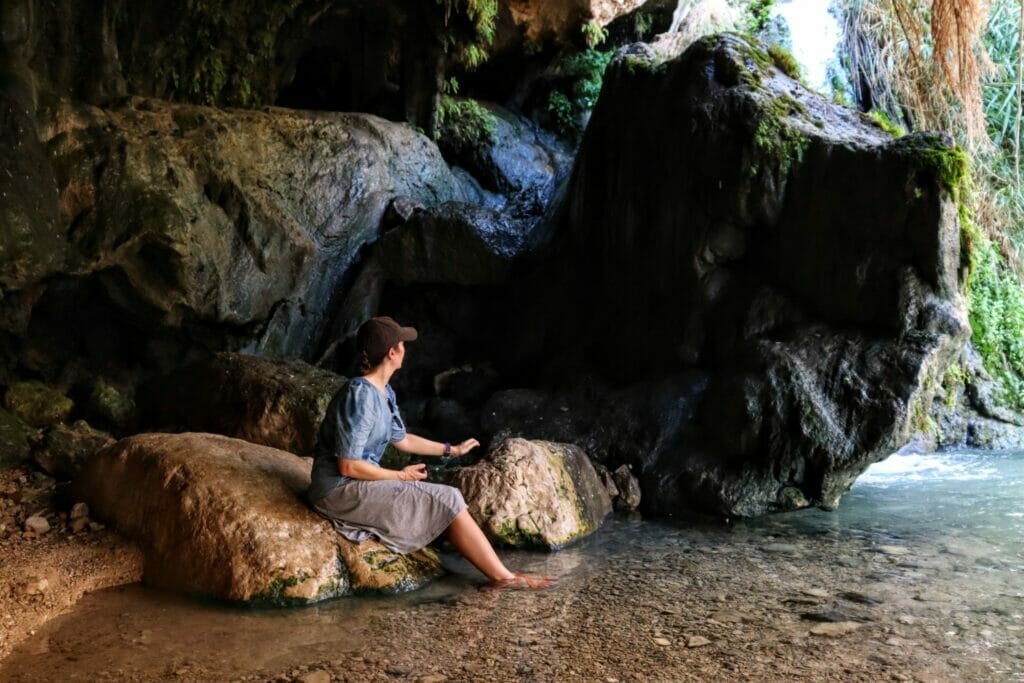
Most visitors go there to see the classic hike at Nahal David. This well-known waterfall trail is impressive and beautiful. But dig a little deeper into the nature reserve and you’ll find worlds of varied natural beauty.
This guide will take you through all of the best trails at Ein Gedi. If you manage to work your way through all of these trails, you’ll be an official Ein Gedi insider.
Nahal David – Begin with the Basics
Nahal David – it’s the trail people think of when they think Ein Gedi. The hike begins at a large picnic area and oversized parking lot. The Nahal David trail is a short, 1.5 kilometer loop that leads from the main entrance towards some of the most beautiful waterfalls in Ein Gedi.
At the start of the trail, visitors are greeted by wild ibex and cute rock badgers (both mentioned in the Bible). These animals have become an integral part of the Ein Gedi experience.
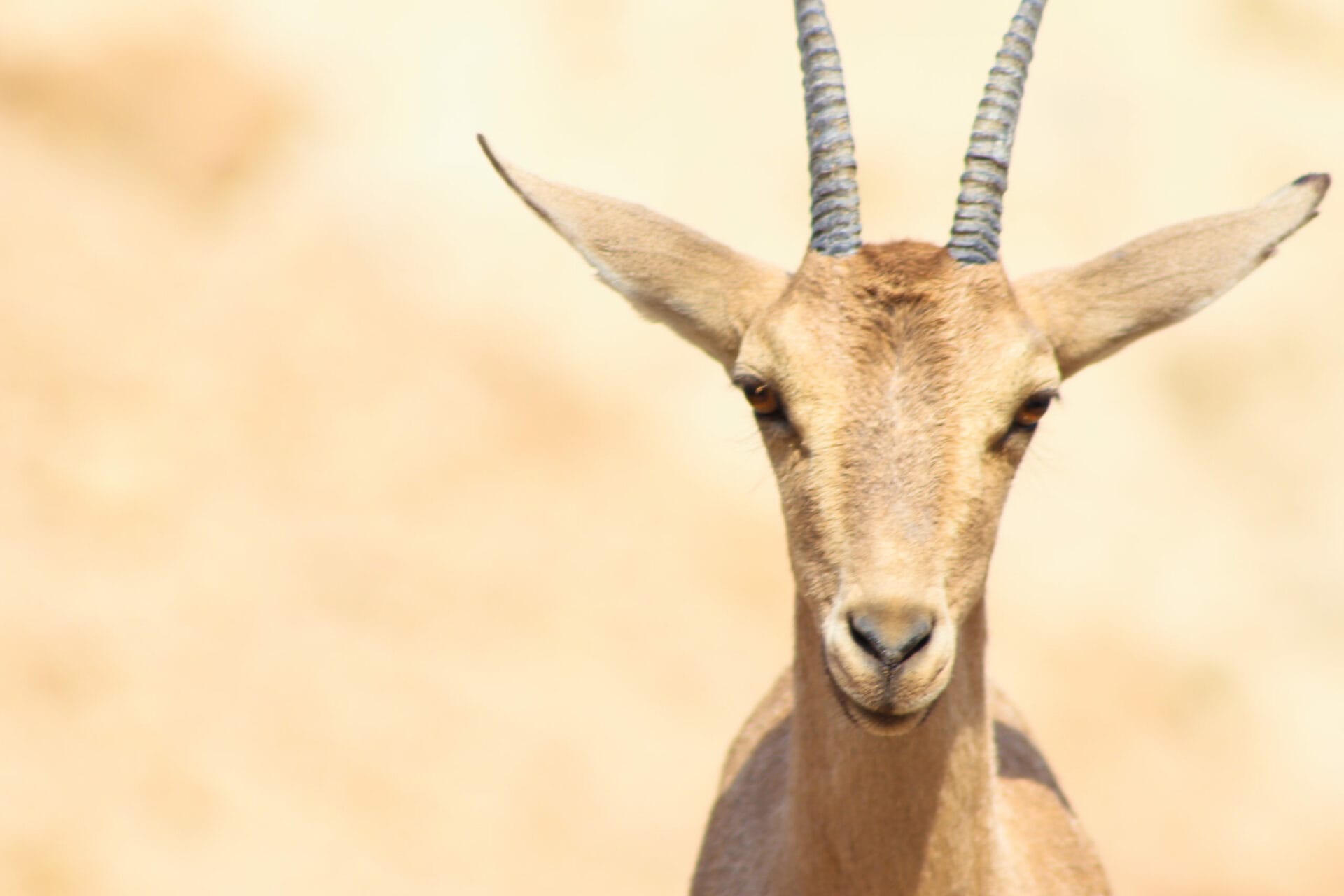
After a short walk through the hot desert, the Nahal David trail leads into a lush desert oasis. Waterfalls spill into crystal pools along the trail, creating a welcome escape from the desert heat.
The pools are shallow, more suited to wading than swimming, making the Nahal David walk a family favorite. The waterfalls are more than just a trickle – in many places they crash down with incredible force. You haven’t really experienced Ein Gedi until you’ve felt the thrill of putting your head right under a cold rushing waterfall.

After walking through several waterfall pools, hikers reach Mapal David (David’s waterfall), the last stop before the trail loops back towards the entrance. After the grand finale, the trail returns towards the gate, stopping at several additional pools on the way.
Read a full summary of Nahal David with maps and instructions.
Nahal Arugot – An Upgrade on a Classic
If you’ve already been to Nahal David a few times, it’s time to upgrade to a longer, more exciting hike at En Gedi Nature Reserve: Nahal Arugot.
Nahal Arugot is filled with the same lush beauty as Nahal David. The wet trail leads through waterfalls and crystal pools. At Nahal David you walk between pools on dry land. But the Nahal Arugot wet trail leads right through the water.
The entire trail is about 4 kilometers each way, but you can hike as much or as little as you want. One highlight is the Hidden Waterfall, a beautiful waterfall with a large pool that’s great for swimming.
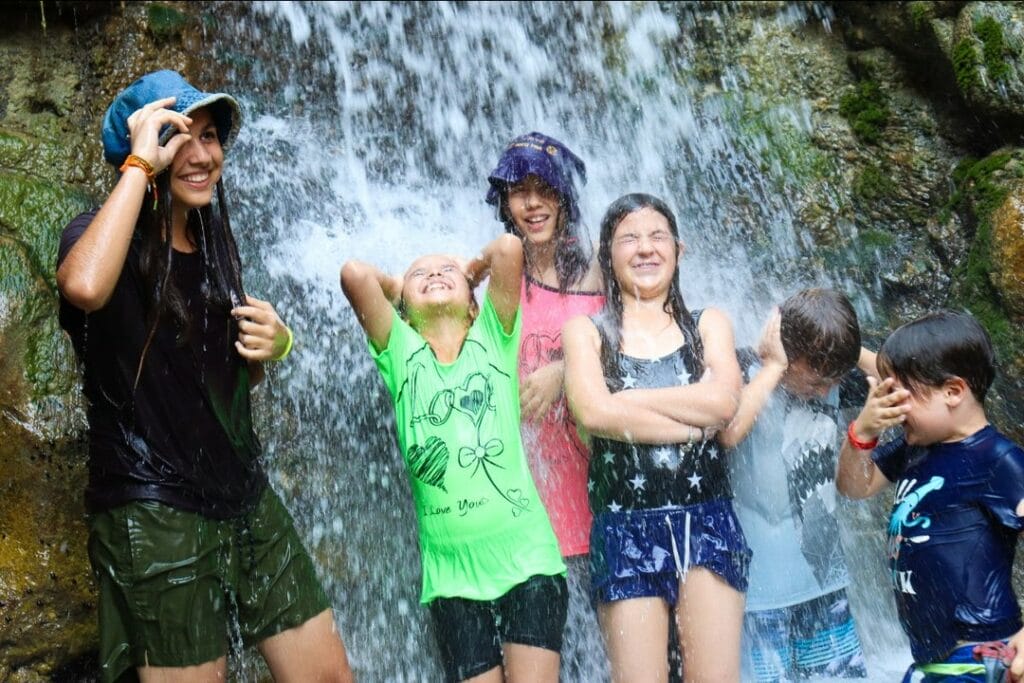
For the ambitious, the hike continues through a twisted rock maze up to the Upper Pool, an aquamarine body of water surrounded on all sides by white stone. From here, hikers return via the dry trail: no water, but spectacular views out to dramatic red mountains instead.
Nahal Arugot is a great trek for families or for anyone looking for an upgrade on the classic.
Read a full summary of Nahal Arugot with maps and instructions
Ein Gedi Spring and Dodim Cave: Hidden Magic
Some people like to stay away from tough ascents. But if you don’t mind walking for 20 minutes uphill along a desert mountain, a hidden treasure awaits at Dodim Cave.
The Ein Gedi Spring/Dodim Cave hike begins at Nahal David. Instead of continuing along the standard route, take the breakaway trail to reach the Ein Gedi Spring/ Dodim Cave hike.
After a long climb uphill, the trail veers left towards Ein Gedi Spring. The spring feeds into a small pool, perfect for a relaxing break under the palm trees. Nearby, you can explore the ruins of a Chalcolithic Temple which dates back 5000 years.
After Ein Gedi Spring, you’ll retrace your steps towards the crossroads to Dodim Cave – one of the most beautiful parts of the En Gedi Nature Reserve. A short walk takes you down to soft white rock and waterfalls, mingling together in a place of quiet magic. After climbing down through the oasis, you’ll reach Dodim Cave itself.
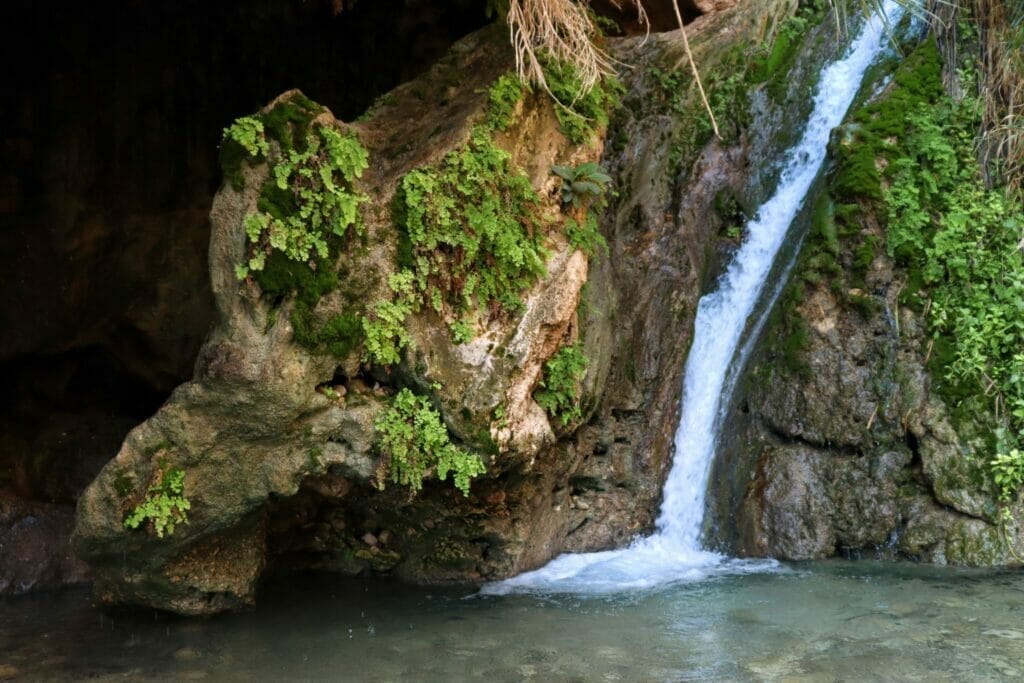
Dodim Cave is a cross between a pirate’s cove and a Discovery Channel special. A waterfall pours into the cave, half in the sun and half in the shade. Thick green moss grows down in wispy sheets over the cave’s entrance. Birds frolic in the effervescent spray of the waterfall. It is simply beautiful.
You could spend all day at Dodim Cave. When your day is done, follow the trail back along the same path.
At about 6 kilometers with a 200 meter ascent, this trail is good for reasonably fit hikers.
Read a full summary of the Ein Gedi Spring/Dodim Cave trail with maps and instructions.
Mount Yishai and the Window Waterfall: Ein Gedi from Above
If you’re in great physical shape and up for a serious desert hike, Mount Yishai and the Window Waterfall is the trail for you. This hike travels from the Ein Gedi Field School to the top of Yishai Mountain. Then, it descends through a dry desert riverbed towards what’s known as the Window Waterfall (also dry).
If you think the whole point of Ein Gedi is to get wet, think again. This hike is perfect for a clear winter day. The scenery is absolutely unbelievable – from the crisp blue of the Dead Sea in the distance, to the rolling red mountains all around.

After trekking to the top of Mount Yishai, the trail leads back down through a series of gradually descending plateaus towards an unparalleled view at the Window Waterfall. This final stop along the trail looks out at the Dead Sea, the lush En Gedi Nature Reserve, and dramatic desert mountains which surround it on all sides.
This trail is not for novices. At 9 kilometers with a 500+ meter ascent and lots of tough climbing along the way, only fit hikers should tackle this trek.
Read a full summary of Mount Yishai and the Window Waterfall with maps and instructions.
Tel Goren and the Ein Gedi Ascent
If you’ve made your way through all of the Ein Gedi hikes and are looking for something more, there are other challenging trails to choose from. The Ein Gedi Ascent trail is about as tough as the climb up Mount Yishai. It leads through the ruins of Tel Goren (an ancient Biblical city), before climbing up to Ein Gedi Spring. After cooling down in the spring, hikers follow a sharp ascent until reaching the Ein Gedi lookout at the top of the mountain.
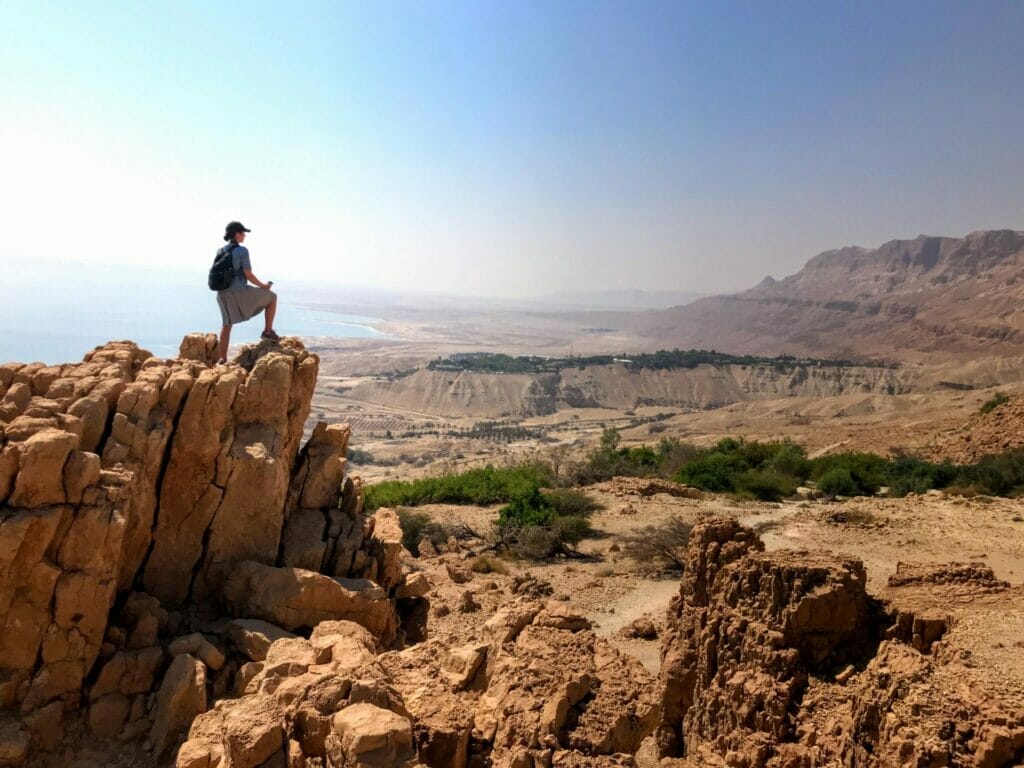
Ein Gedi: There’s More to Explore
Ein Gedi is a popular tourist destination. But there are lots of lesser known ways to enjoy this beautiful nature reserve. Try one of these trails, and you’ll see a side of Ein Gedi that most people never see.
Since it’s a National Park, all trails are well marked and easy to follow. You can view the complete trail map online for free or pick up a paper map at the park’s entrance.
A visit to En Gedi Nature Reserve is a trip through Biblical history, native animal life, and dramatic beauty. Experience quintessential Israel with a visit to Ein Gedi, the largest and most beautiful desert oasis in the country.

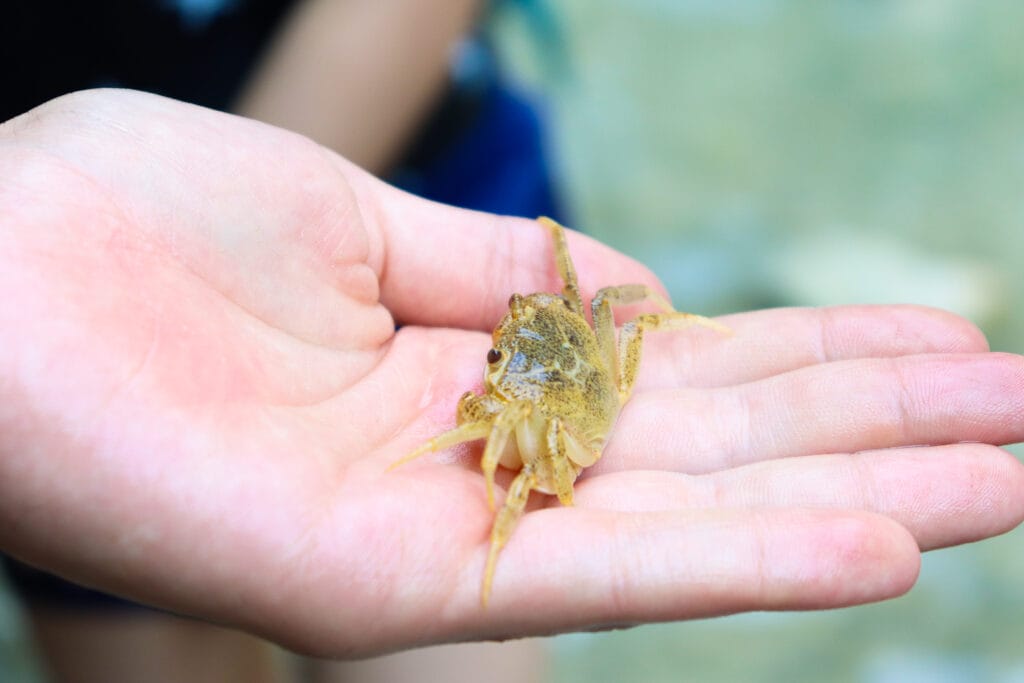
Click to expand FAQ:
FAQ
Yes! Cooling down in the natural pools along the trail is one of the best parts of a trip to the reserve. Bring your bathing suit and water shoes!
The trail at Nahal David is about 1.5 kilometers long and takes 1-2 hours to complete. There are longer trails at the Nature Reserve. The free map at the entrance will guide you along all of the trails at the reserve.
It takes about 1 hour and 20 minutes to get there by car, 1 1/2 hours by bus.
Ein is the Hebrew word for spring. Gedi means a small goat. So the name means “spring of the small goat”
Yes. There are buses that bring you right to the main entrance. Check Moovit for public transport instructions.
During the summer, it’s open from 8:00 – 17:00 on weekdays and until 16:00 on Fridays. In the winter, the reserve is open from 8:00- 16:00 during the week and until 15:00 on Fridays.
No, dogs are not allowed at the Nature Reserve.
The entrance fee is 28 NIS per adult and 14 NIS per child.
No food is allowed along the Nahal David trail. There is a large, shaded picnic area at the main entrance.



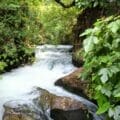

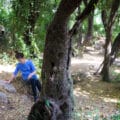

The Bnei HaMoshavim trail is a steep ascent with wonderful views of Nahal Arugot. On reaching the plateau you can descend via the Ein Gedi Ascent to the Chalcolitchic Temple, Ein Gedi Spring, to either Nahal David or Nahal Arugot.
The Trurya Ascent begins near the Botanical Gardens of Kibbutz Ein Gedi and is probably the toughest of the 5 ascents. It reaches the plateau, and after traversing through riverbeds and plains, you’ll reach the Isi’im Ascent, which will bring you gradually down to Nahal Arugot